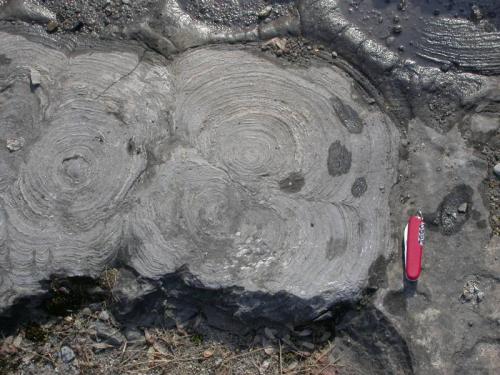Mirages are common phenomena. We’ve all seen them, if not in a desert or on the ocean, then on a highway in summer, when differences in air temperature between road and air bend light to make a blue sky appear as a puddle on the road ahead. The optical phenomena fool the inexperienced brain, but not the experienced one. Image isn’t, as we come to know, always reality.
Phantoms and hallucinations, however, step into the dimension of reality in ways peculiar to individuals. Amputees experience phantom limbs, and there are even auditory analogs of hallucinations. Random sounds, such as those produced by the tracks of heavy equipment running over rocks, can sometimes echo in our brains as a call of our name. “What?” we ask in the presence of puzzled companions whose brains never heard and interpreted the random sounds as language. And, of course, there are those troubling personal hallucinations in brains affected by diseases and mind-bending drugs.
The brain needs to interpret the information it gets from the senses because acting on the premise that a phantom , hallucination, or mirage is real can be hazardous. Think of the lingering hallucinogenic effects of LSD on brains as an example. Years after taking the drug, a woman I knew fell down a flight of steps and injured herself because she experienced an alternate reality, a different place and position, that momentarily substituted for the stairs on which she actually stood. We’ve seen or heard of those with deteriorating brains also think hallucinations are real. For those in such degenerative states, alternate realities and dream-like brain states aren’t rectified by rationality or knowledge. Whatever appears to be real is real for them.
I recall an incident during which my ninety-year-old grandmother said, “Look at the big spider crawling on the floor.” It was a bare floor; the spider was in her brain. There was no phenomenon we could share, something like a rainbow, a nonexistent puddle on the road ahead, or a lake in the desert. All of us could look at the surface of Mono Lake under the clear desert air to see the reflection of the Dioscuri; none of us can look into the brains of the hallucinating to see exactly what they see. We can share mirages, but not phantoms and hallucinations.
Fleeting phantoms, hallucinations, and mirages pop into human reality, appearing suddenly like some gods and demigods in Greek mythology, as Castor and Pollux appear, for example in Euripides’ play Helene. There might be a lesson in the phenomena of unshared phantoms and hallucinations. In that play by Euripides, Helen(e), yes, that Homeric “Helen of Troy,” was never abducted by Paris. Instead, Helen(e) was taken to Egypt, and a phantom Helen fashioned by Hera went to Troy. Menelaus, King of Sparta and Helen’s husband, went off with all those Achaean warriors in those thousand ships in the wrong direction, all chasing after a phantom on the shores of Illium. Humans, it seems from the drama, will act decisively on what they think is real as much as on what they absolutely know is real.
In Euripides’ play, Menelaus discovers the difference between his phantom wife, whom he rescued from Troy, and his real wife after he is shipwrecked upon the shores of an Egyptian ruler named Theoclymenus, who wants to marry the real Helen. Helen, believing Menelaus died at sea acquiesces at first, but then discovers that her husband is still alive. With the help of Theonoe, the Egyptian king’s sister, the reunited couple escape to make their way back to Sparta. Then Theoclymenus, angry with treacherous Theonoe for aiding their escape, is ready to kill her when Castor and Pollux intervene to explain that it is Heaven’s wish that Menelaus and Helen find their way back to their homeland.
But what of the phantom Helen whom Menelaus rescued? She disappeared into thin air according to a report a messenger gives to Menelaus after he is reunited with Helen. Hmnn.
Let’s go back to that thing I wrote above, you know, about humans acting on what they think is real as much as on what they absolutely know is real. Happens to all of us, doesn’t it? Concluding and acting on the basis of a phantom, hallucination, or mirage frame much of our public passion, especially when get angry, get wrapped up in a mob, or vote under the influence of unrelenting propaganda. Often there are no Dioscuri to intervene on behalf of Heaven and reality. Our actions have detrimental and sometimes tragic consequences because the appearance of the gods on the surface of our lives is just a reflection of the sky. Castor and Pollux don’t suddenly appear to save us, even when we act compassionately as Theonoe did when she betrayed her brother in an attempt to save Menelaus and Helen. Our actions, however motivated by what is real or unreal, always have irreversible consequences.
And then, finding out that the reality we thought we knew has disappeared into thin air like the phantom Helen in Euripides’ play, we take one of two paths: The first path is one less traveled because it involves admitting that we chased after a phantom, that we were wrong. The second path is more traveled because it involves continuing as though the phantom was real, the hallucination a reality, or at the very least a clear reflection of the heavens like the Dioscuri mirrored in Mono Lake at night. The former path is the road to reality or to a different future; the latter, the road to human folly that is paved in rock-hard pride. Walk down that second path, and you might find yourself, like the woman on LSD, falling and injuring yourself.




 RSS Feed
RSS Feed